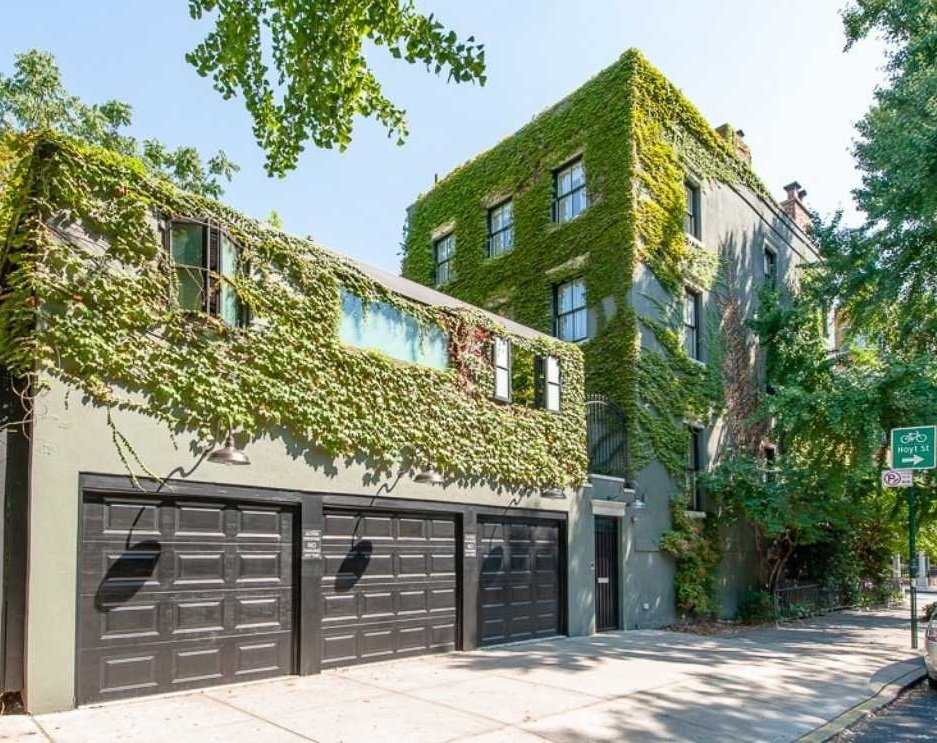#8538. Green Facade: Urban Mansion Enveloped in Living Vertical Vegetation
The image showcases an impressive urban residence with a facade almost completely covered in climbing greenery. This is an excellent example of the symbiosis between architecture and nature, where vegetation becomes an integral part of the architectural appearance. The building has a strict geometric form with rectangular outlines and a minimalist core design.
This two-to-three-story mansion is executed in a modern style with elements of industrial aesthetics. The lower level features three dark garage doors with a paneled relief pattern, creating a clear contrast with the green covering of the upper floors. The grayish-beige walls of the building are almost entirely hidden beneath a dense layer of ivy or grapevine, giving the facade a living, organic appearance.
The windows are rectangular with minimalist frames that harmoniously fit into the overall concept. Particularly expressive are the second-floor windows, framed by greenery that doesn't obstruct the openings but creates a natural border. This solution is not only aesthetically pleasing but also functional – in summer, the plants provide additional shade and coolness.
This "green facade" technique can be adopted when designing your own home. Vertical landscaping not only improves the aesthetic appearance of the building but also provides additional thermal insulation, protects walls from overheating, and creates a favorable microclimate. For a private house, various types of vines can be used – from classic ivy to Virginia creeper, wisteria, or clematis, selecting plants according to the climatic conditions of the region.
